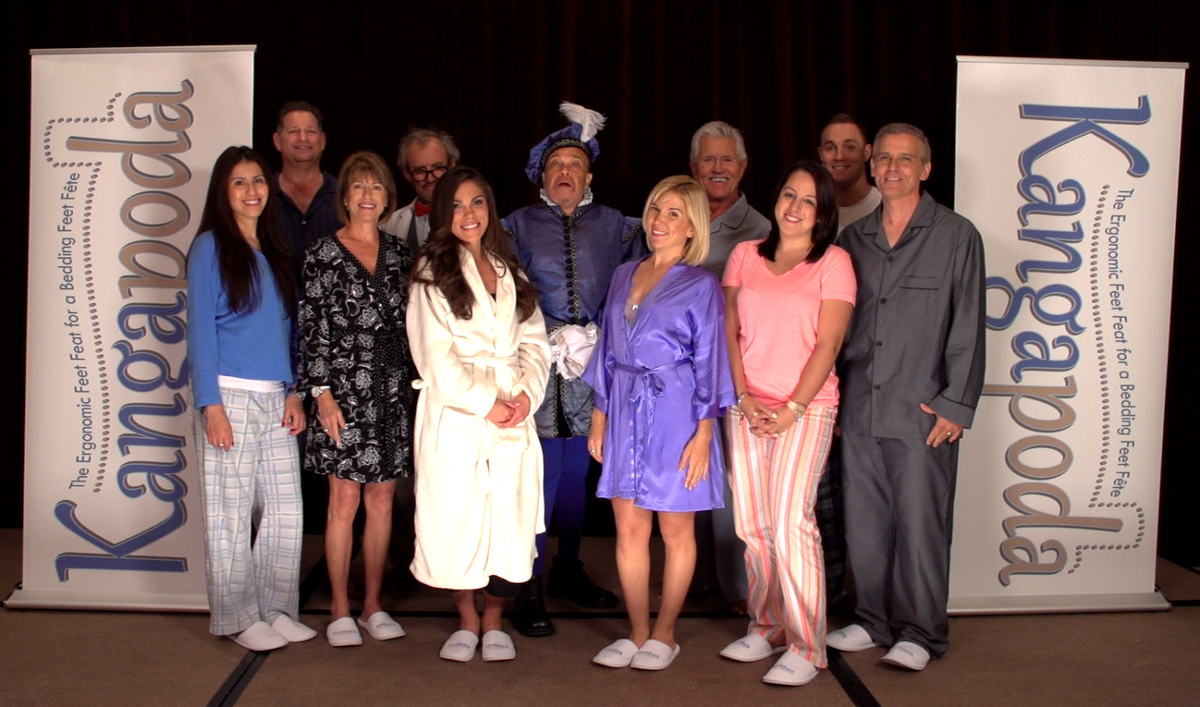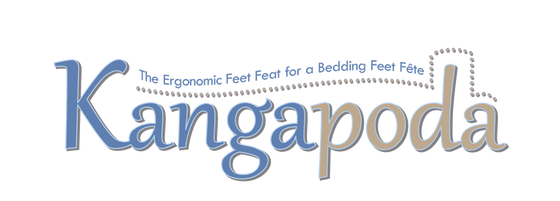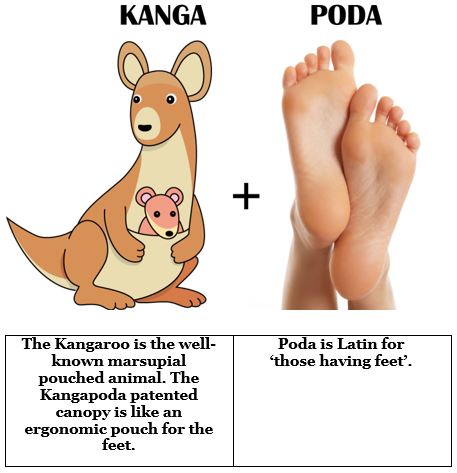-

Our Story
THERE’S GOTTA BE A BETTER WAY!
“The process from the glimmer in the eye / cramp in the calf, to patent-protected intellectual property, to ready- to-launch world-class products has been long, rigorous, and expensive. I committed myself to Kangapoda because it is not a gimmick. It is so much more comfortable, it is not even debatable. I would never use a plain flat top sheet on my bed ever again now that there is Kangapoda.”
Hal Mintz, Inventor & Founder

He experienced what so many inventors before him had experienced. . . a ‘there's gotta be a better way’ epiphany based on his own need. He got granular and more substantive. What was required was a top sheet that had an ergonomic canopy for the feet. The canopy would lie flat when not in use to mimic a plain flat top sheet; however, when one was under the covers on his or her back, the canopy would expand and drape the feet eliminating the tension.
And ultimately, the largest potential market is all the people with no specific medical issue who simply dislike the tightness at the foot of the bed.
PATENTING THE IDEA



DREAMING UP A BRAND NAME
The name for a consumer product is often hard to get just right particularly because the brand name is the foundation for the company’s marketing efforts. A lot of brainstorming went into the inspiration to fuse two words with inherent cultural and experiential qualities into an entirely new context—a bed top covering with a pouch for the feet. The name Kangapoda is fun, catchy, distinctive, and descriptive. And, Kangapoda is also friendly and pleasing to the ear.
DESIGNING A LOGO
The company name is the starting point, but how the name is featured adds strength, depth, and complexity to the brand. Kangapoda’s logo is whimsical, pleasing to the eye, and gets right at the core of the business idea—as the logo metaphorically depicts the product itself. The entire name doubles as the raised bed with the “K” functioning as the headboard. The dotted line depicts the Kangapoda sheet or blanket highlighting the foot canopy at the bottom that is vaulted over the stem of the letter “d” which metaphorically depicts the extended feet of a person reclined under the top coverings.
ADDING A COMPLEMENTARY TAGLINE
A tagline is a branding slogan usually paired with the brand name or logo in marketing communications and advertising. The idea behind the concept is to create a memorable phrase that will sum up the tone and premise of a brand and reinforce the consumer’s memory of the product. The tagline should go straight to the heart of the brand and what the company would like people to remember about it.
The Ergonomic Feet Feat for a Bedding Feet Fête™ states exactly what the Kangapoda top coverings are all about:
- Ergonomic – intended to provide optimum comfort and to avoid stress or injury Feet – all 26 bones, 33 joints, 100+ muscles, tendons, and ligaments
- Feat – an achievement that requires great courage, skill, strength, or innovation
- Fête – a celebration, jubilee, or festival
The tagline’s use of the repetitive consonance of the “F” sound and its homophonic arrangement of words that all sound like ‘feet’ but have different complementary meanings is playful and descriptive.
KANGAPODA JINGLE
The Kangapoda jingle is awesome. It is descriptive. It is fun to sing. It is catchy. Hal wrote the words and his Uncle Norman, a retired ophthalmologist who is a classically trained pianist, created the melody.
FINDING A MANUFACTURING PARTNER
Kangapoda now had a good design, but the company needed to find a manufacturer. This was not an easy task. Hal can empathize with all the inventors in terms of how long and tricky the process of finding a manufacturing partner can be. To begin, Kangapoda wanted to produce in America. Hal learned in a far more direct way how a whole host of U.S. manufacturers had ceased operations. It was a little sad to travel through some previously industrial areas and see building after building now uninhabited.
Even if the inventor is lucky enough to be introduced to the right potential manufacturing partner, capturing his or her attention is no easy task. Almost by definition, the manufacturer must also have the entrepreneurial spirit; and, of course, (s)he must appreciate the inventor’s vision.
Slowly but surely, Hal made progress. One thing that caught him a little off guard was the need, particularly in the early stages, to provide very detailed manufacturing guidance for the prospective expert manufacturers. But after getting back some rather funny looking Kangapodas, Hal realized he had to get smarter regarding cut and stitch operations so that he could give better guidance.
For those of you who have ever been injured or infirm and come to realize that you must take some control over management of your condition and not just rely on the expert doctors—this was somewhat analogous. Kangapoda did not have the in-house skills or capital to do sophisticated CAD-CAM drawings. Instead, Hal resorted to a not-to-scale oak tag model put together with bobby pins. Incredibly, it worked. The detailed arts and crafts project was very helpful to all and led to the first official Kangapoda Ergonomic Top Sheet being made.
Finding a manufacturer was cool, but it wound up being only a step. A third-party manufacturer wants to do large runs. This is far more efficient for them. But, as a small, owner-financed company, Kangapoda was not able to afford large runs, let alone large runs in all the different fabrics, colors, sizes, etc. Kangapoda really needed to implement a quasi-custom / just-in-time type of solution. When the third-party manufacturer informed Hal that he was selling his factory (land) to a developer and retiring, Hal realized he had to act decisively.
OPENING OUR OWN FACTORY
For both offensive and defensive reasons, Hal determined that rather than move all the expensive fabric and packaging into storage where it would be inaccessible, it was time to create a Kangapoda factory. Sparing the gory details, it was an expensive, emotional caper. Where to go. How to do it. How to configure it. But, a little ergonomic magic was in the air, and Kangapoda wound up opening its own factory in Pompano Beach, FL with a master cut and sew man at the helm. Bit by bit, it was configured and became operational.
Kangapoda can now implement its quasi-custom manufacturing process. When we do not have an item in inventory, we can quickly produce it. The just-in-time flexibility is also cost efficient. Moreover, taking ownership of the manufacturing process has only increased our creativity and quality. For example, on the creativity front, we now have our incredible shams to complete the KangaPlush blanket ensembles. Prior, left over fabric just disappeared. On the quality front, we are responsible for every single detail. Our products are nonpareil. Our commitment to excellence is reflected in all that we do.
Kangapoda is proud to say that Kangapodas are Made in the USA
© 2025 Kangapoda.






